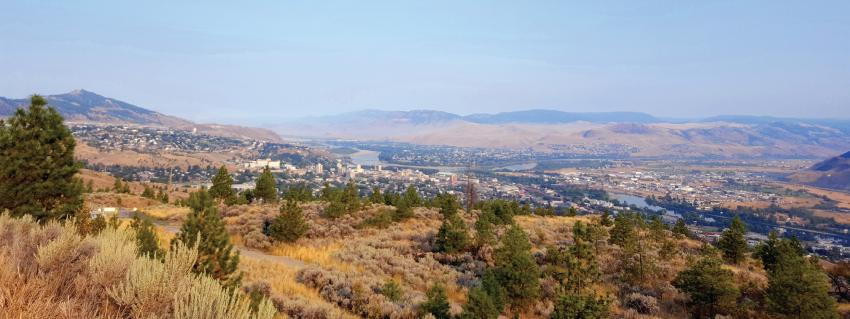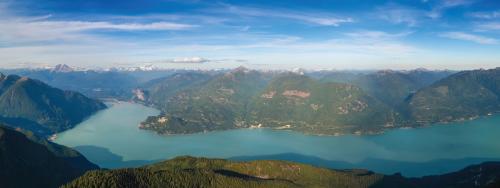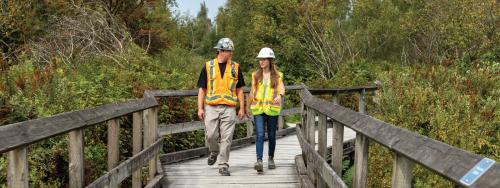Study will help inform our restoration process in Kenna Cartwright Park
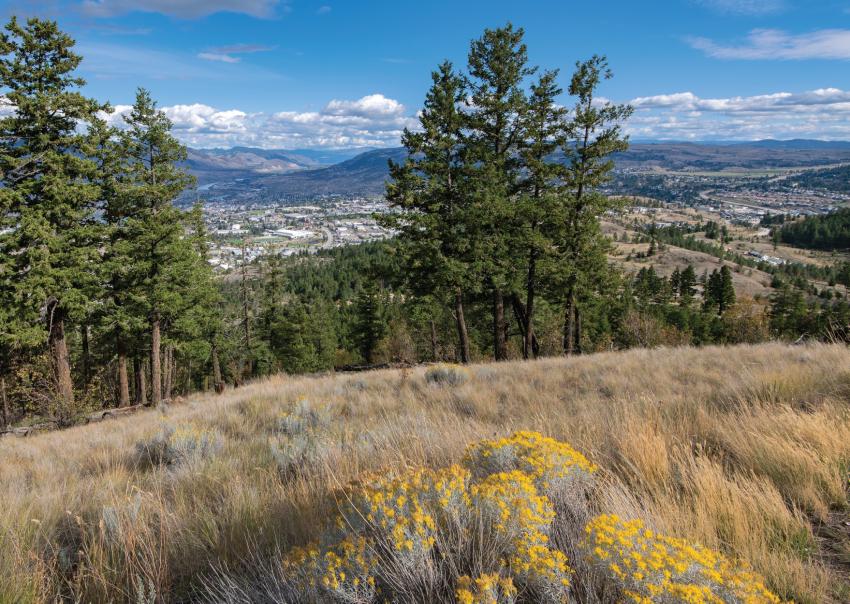
We recently upgraded our gas line in Kenna Cartwright Park as part of our Inland Gas Upgrades Project. Once construction is complete, we want to restore our worksites to the way they were before, or even better. We partnered with TRU for this invasive species study to explore ways we could improve our work site restoration process and adapt it for conditions found in the park.
Soil amendments were an important part of the study
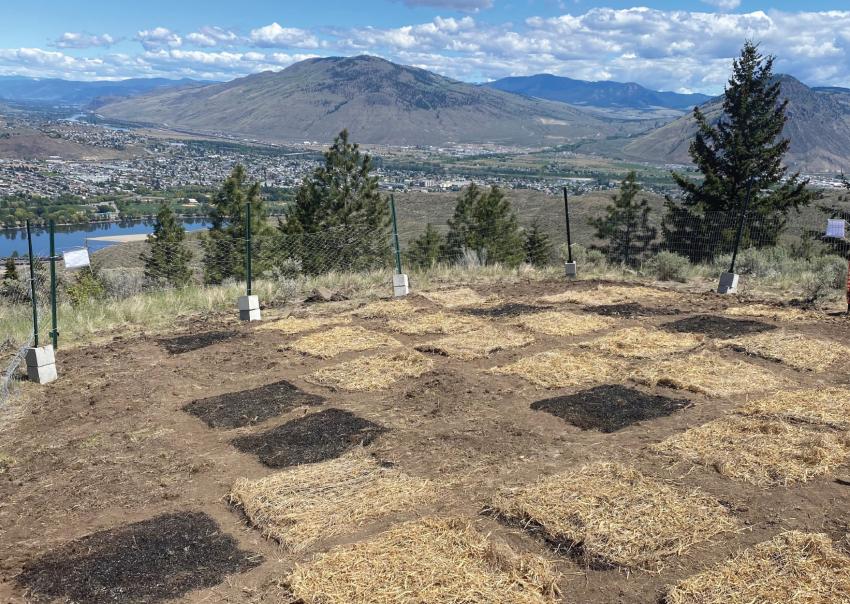
Nate Dungey, a TRU master’s student and Nate’s supervisor, Dr. Moro Fajiye, a TRU post-doctoral fellow, launched the study in the park in the spring of 2020. They seeded four separate plots of land with native species, including a variety of grasses and broad-leafed herbaceous plants called forbs, that are found along the same elevation gradient as our gas line right of way. Then they applied different amendment treatments—ingredients added to the soil to help plants get a good start—to each plot.
Nate says, “The soil amendments we worked with were chosen to help with the growing conditions along the gas line right of way. When soil is disturbed by construction it becomes exposed, loose and highly susceptible to erosion by water and wind. Also, excavated areas can be prime breeding grounds for invasive species such as spotted knapweed and cheatgrass to flourish.”
“We used straw matting to act as a barrier to help prevent seeds from invasive species from taking hold, and to help prevent soil erosion. We also used biochar (burned wood) to provide a slow release of nutrients, mainly carbon and nitrogen, into the soil.”
They tested four sites along the gas line right of way using the following soil amendment combinations:
- neither straw matting nor biochar
- biochar on its own
- straw matting on its own
- both biochar and straw matting
Results revealed an unexpected finding
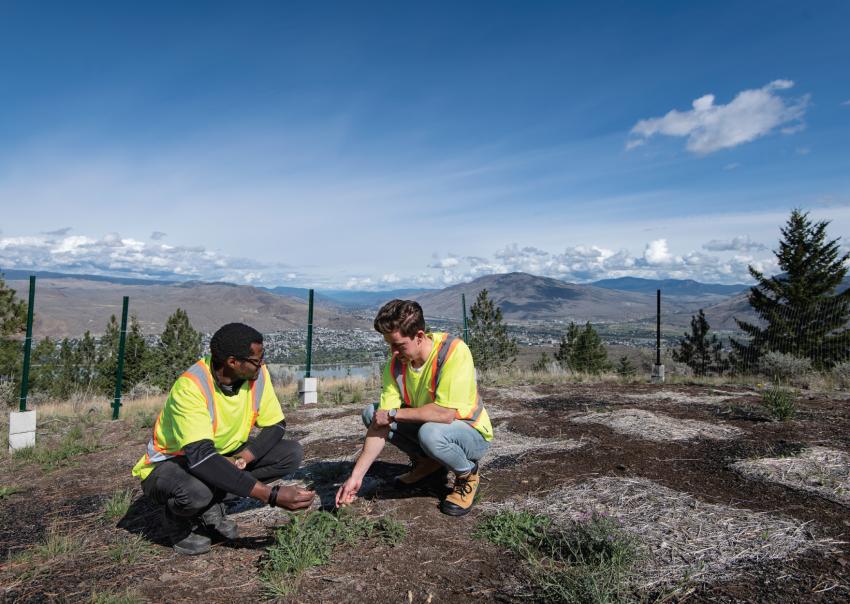
When they tested the soil, the students found that the site treated with both biochar and straw matting showed the most promising results in terms of high organic matter content in the soil, signaling it had a higher nutrient content, which would help promote plant growth.
The results also revealed a valuable finding that the students weren’t expecting. “Testing showed that using straw matting and biochar together significantly increased the amount of moisture the soil was able to retain. The plot treated with straw matting alone didn’t produce a similar finding,” says Nate. “Moisture can deteriorate rapidly in the semi-arid grasslands of the interior, especially in summer during the growing season. Since soil moisture content is so important for plant growth, we saw this as a major finding.”
“Mock” gas line site added value to study
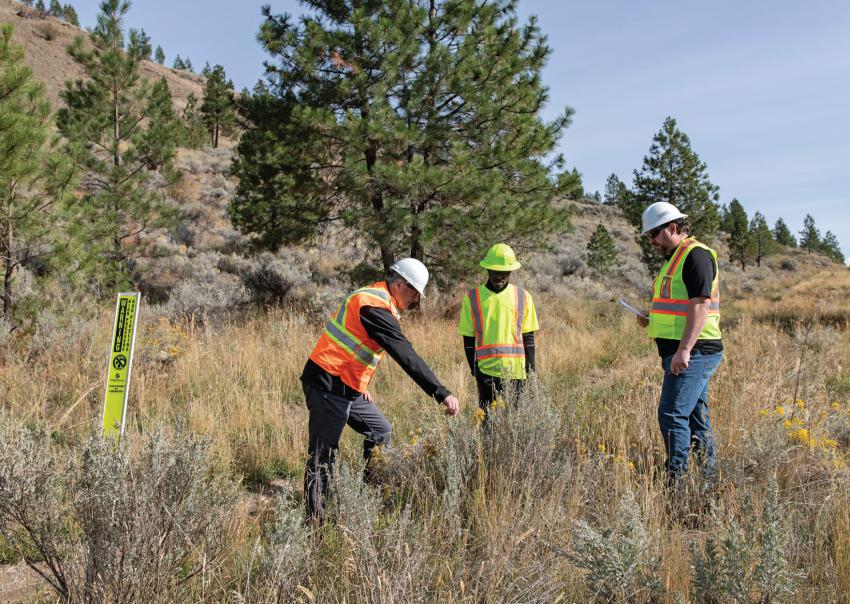
In June 2021 a plot of land near TRU, known locally as Shavers Corner, became available, affording the TRU team an opportunity to try their experiments on a “simulated” pipeline construction site. A FortisBC construction crew laid a section of gas line on the site, creating the same kind of disturbance that would soon occur during the gas line upgrade work in Kenna Cartwright Park.
Dr. Lauchlan (Lauch) Fraser, professor and NSERC industrial research chair in ecosystem reclamation at TRU, is the principal investigator on the TRU invasive species study. Lauch explains the importance of the Shavers Corner trial, “The best way to test something is to do it for real... so that’s why we set up another study where we could dive into a ‘mock’ gas line laying exercise.”
The TRU team introduced the same native plants to the Shavers Corner site that they planted in the park, but in slightly different configurations. “Whatever order a particular plant species arrives at a site can have a specific impact on that plant community’s development,” says Lauch. “This is known as priority effects. I think priority effects is kind of like a jigsaw puzzle. If you put the pieces in the right order, then you're going to finish the puzzle, because only certain pieces fit well together. Knowing what species fits into the communities, and the order of arrival that they can best colonize, is critically important to restoring a plant community quickly.”
The TRU team planted three sites at Shavers Corner, each with a different planting order:
- forbs planted first, followed by grasses
- grasses planted first, followed by forbs
- grasses and forbs planted at the same time
“This part of the study demonstrated that planting grasses before forbs offered the best suppression of invasive species,” notes Lauch. “However, if the goal is to increase ground cover quickly and create more plant diversity, then grasses and forbs should be planted together. Planting them together also proved to be quite effective at preventing invasive species from colonizing the site.”
Study offers tangible results for restoring work sites
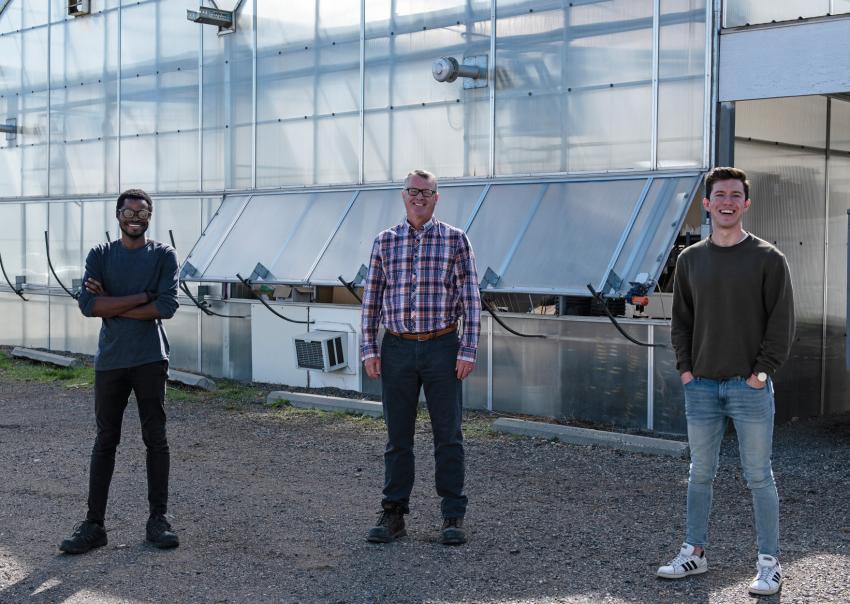
Caroline Astley, an environment manager with FortisBC, received updates on the two-year study as it progressed. She says, “Overall, the TRU study shows great promise. There are some very tangible results that we can apply to our restorations.”
“The Kenna Cartwright Park study is the first I’ve seen that looked at soil amendments to assist with restoration. It shows that when it comes time to restore our work sites, instead of using commercial fertilizer, which can be expensive, hard to source and rather unpleasant, there are more natural soil amendments we can use to obtain a successful restoration outcome, like straw matting and biochar.”
Caroline also notes, “The study at Shavers Corner has reinforced the value of something we already do during restoration: plant a combination of grass and herbaceous species to create biodiversity and suppress the growth of invasive species. Every plant has a different growth rate. A mixture of quicker and slower-growing plants complement each other, allowing both to grow better.”
Lauch echoes Caroline’s thoughts: “I think what these studies demonstrate is that by applying priority effects, we can increase diversity while also reducing invasive plants within a disturbed ecosystem.”
He adds, “Often in restoration, there is the hope that once you apply your treatments, things will return to a self-sustaining, diverse state. But it may require that you go back and reapply those treatments. It may cost a little more money to do that, but it will cost less down the road because it will be a successful restoration.”
The IGU Project’s restoration activities in Kenna Cartwright Park will begin in fall 2023 and continue in 2024 to align with optimal vegetation planting periods.
